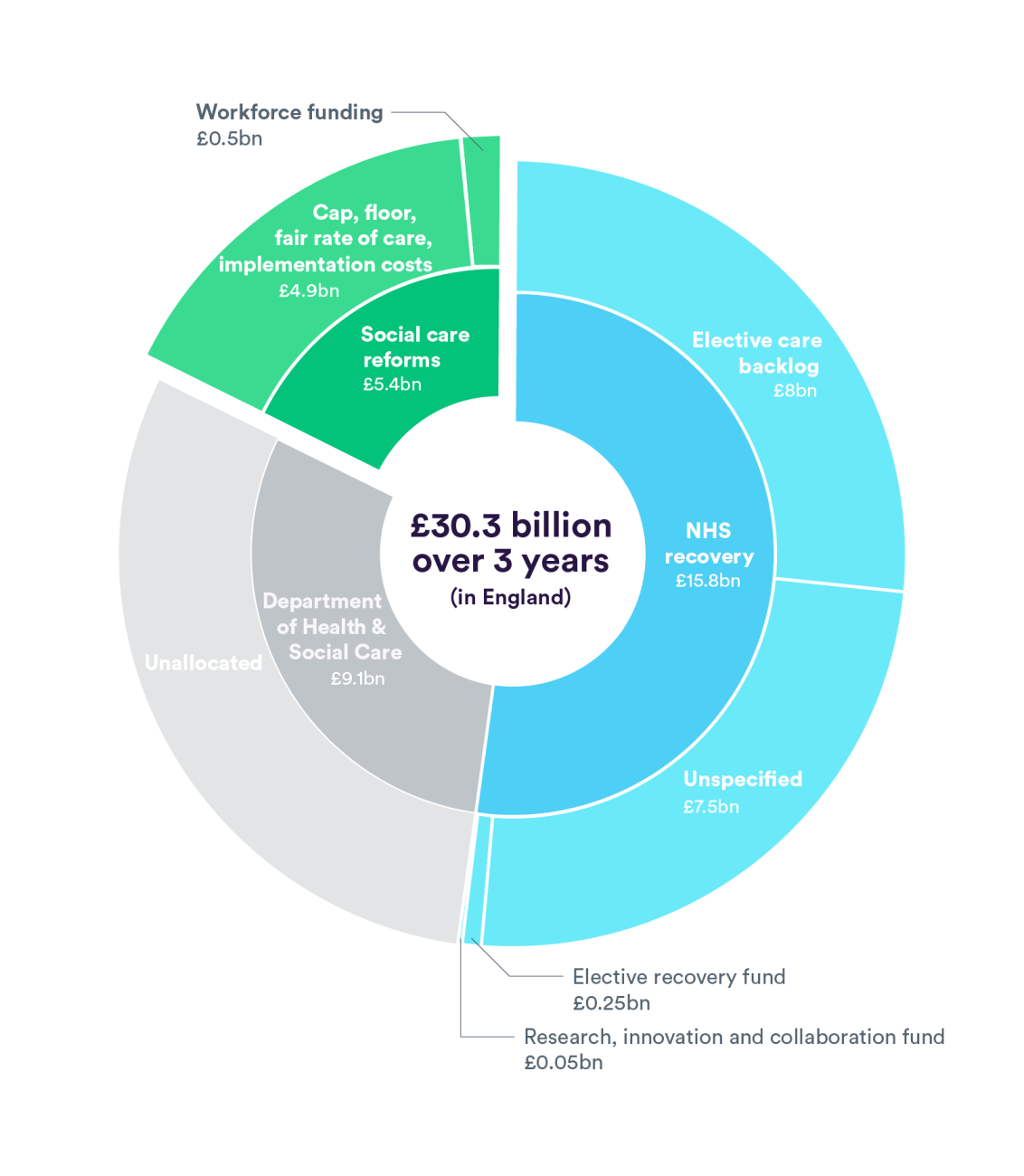This week, the government announced a historic increase in taxes for the NHS and social care: £36 billion over three years raised by a “health and social care levy”. It is intended in the first instance to support the NHS as it recovers from the pandemic, before then being used to help the beleaguered social care sector.
Of the promised £36 billion, around £30.3 billion will go to England over three years. But social care will only see £5.4 billion over three years. With the social care sector exhausted by the pandemic, people who use care, and those who provide it, are understandably feeling short-changed.
The vast majority of that £5.4 billion is likely to fund a cap on individuals’ lifetime care costs, set at £86,000. The existing upper means test (known as the ‘floor’) will be raised from £23,250 to £100,000, which means more people can potentially access state support.
But the proposals put forward by the government offer scant detail about how exactly the funding pot will be allocated. Previous estimates have suggested that a cap and floor model similar to what’s proposed would cost £2 billion per year alone in 2023/24 rates. The funding is also intended to cover implementation costs to local authorities, and to help ensure that councils are paying providers of care fees that are fair. Will the social care pot realistically be enough to cover all of these plans?
What we do know is that £500 million of the £5.4 billion is meant to go towards the professional development of care staff. But critics have questioned whether this will be enough for the 1.52 million strong social care workforce, given the known low pay and working conditions they experience. To put this in perspective, the NHS Pay Review Body reports the government has estimated a cost of £1.2 billion to bring the lowest paid care workers in line with their NHS counterparts.
The levy has the potential to be a sustainable source of money for social care. But until that money is shifted out of the NHS – if it ever is – it is hard to feel confident that the current pot for social care is really enough.

